Introduction to Molecular Dynamics with GROMACS
Introduction to Molecular Dynamics with GROMACS
Introduction to Molecular Dynamics with GROMACS
You also want an ePaper? Increase the reach of your titles
YUMPU automatically turns print PDFs into web optimized ePapers that Google loves.
Summary<strong>Molecular</strong> simulation is a very powerful <strong>to</strong>olbox in modern molecular modeling, and enables us <strong>to</strong>follow and understand structure and dynamics <strong>with</strong> extreme detail – literally on scales where motion ofindividual a<strong>to</strong>ms can be tracked. This task will focus on the two most commonly used methods, namelyenergy minimization and molecular dynamics that respectively optimize structure and simulate thenatural motion of biological macromolecules. we are first going <strong>to</strong> set up your Gromacs environments,have a look at the structure, prepare the input files necessary for simulation, solvate the structure in water,minimize & equilibrate it, and finally perform a short production simulation. After this we’ll testsome simple analysis programs that are part of Gromacs.You should write a brief report about your work and describe your findings. In particular, try <strong>to</strong>think about why you are using particular algorithms/choices, and whether there are alternatives.<strong>Molecular</strong> motions occur over a wide range of scales in both time and space, and the choice of approach<strong>to</strong> study them depends on the question asked. <strong>Molecular</strong> simulation is far from the only availablemethod, and when the aim e.g. is <strong>to</strong> predict the structure of a protein it is often more efficient <strong>to</strong>use bioinformatics instead of spending thousands or millions of CPU hours. Ideally, the timedependentSchrödinger equation should be able <strong>to</strong> predict all properties of any molecule <strong>with</strong> arbitraryprecision ab initio. However, as soon as more than a handful of particles are involved it is necessary <strong>to</strong>introduce approximations. For most biomolecular systems we therefore choose <strong>to</strong> work <strong>with</strong> empiricalparameterizations of models instead, for instance classical Coulomb interactions between pointlikea<strong>to</strong>mic charges rather than a quantum description of the electrons. These models are not only orders ofmagnitude faster, but since they have been parameterized from experiments they also perform betterwhen it comes <strong>to</strong> reproducing observations on microsecond scale (Fig. 1), rather than extrapolatingquantum models 10 orders of magnitude. The first molecular dynamics simulation was performed aslate as 1957, although it was not until the 1970’s that it was possible <strong>to</strong> simulate water and biomolecules.Background & TheoryMacroscopic properties measured in an experiment are not direct observations, but averages over billionsof molecules representing a statistical mechanics ensemble. This has deep theoretical implicationsthat are covered in great detail in the literature, but even from a practical point of view there are importantconsequences: (i) It is not sufficient <strong>to</strong> work <strong>with</strong> individual structures, but systems have <strong>to</strong> be expanded<strong>to</strong> generate a representative ensemble of structures at the given experimental conditions, e.g.temperature and pressure. (ii) Thermodynamic equilibrium properties related <strong>to</strong> free energy, such asbinding constant, solubilities, and relative stability cannot be calculated directly from individual simulations,but require more elaborate techniques. (iii) For equilibrium properties (in contrast <strong>to</strong> kinetic) theaim is <strong>to</strong> examine structure ensembles, and not necessarily <strong>to</strong> reproduce individual a<strong>to</strong>mic trajec<strong>to</strong>ries!The two most common ways <strong>to</strong> generate statistically faithful equilibrium ensembles are Monte Carloand <strong>Molecular</strong> <strong>Dynamics</strong> simulations. Monte Carlo simulations rely on designing intelligent moves <strong>to</strong>generate new conformations, but since these are fairly difficult <strong>to</strong> invent most simulations tend <strong>to</strong> doclassical dynamics <strong>with</strong> New<strong>to</strong>n’s equations of motion since this also has the advantage of accuratelyreproducing kinetics of non-equilibrium properties such as diffusion or folding times. When a startingconfiguration is very far from equilibrium, large forces can cause the simulation <strong>to</strong> crash or dis<strong>to</strong>rt thesystem, and for this reason it is usually necessary <strong>to</strong> start <strong>with</strong> an Energy Minimization of the systemprior <strong>to</strong> the molecular dynamics simulation. In addition, energy minimizations are commonly used <strong>to</strong>refine low-resolution experimental structures.All classical simulation methods rely on more or less empirical approximations called Force fields <strong>to</strong>calculate interactions and evaluate the potential energy of the system as a function of point-like a<strong>to</strong>miccoordinates. A force field consists of both the set of equations used <strong>to</strong> calculate the potential energy andforces from particle coordinates, as well as a collection of parameters used in the equations.


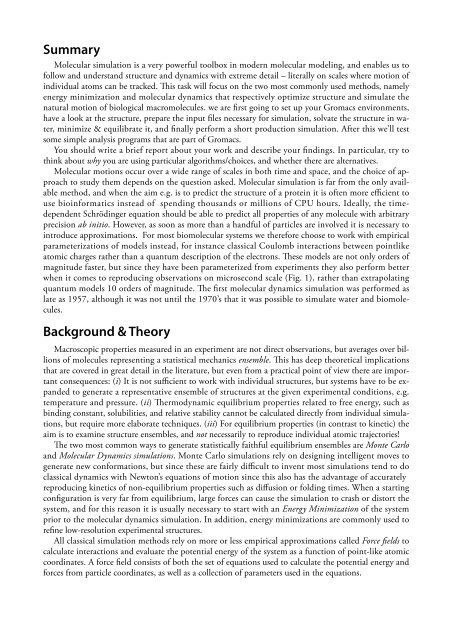
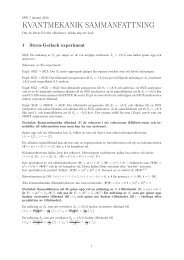

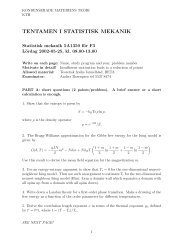
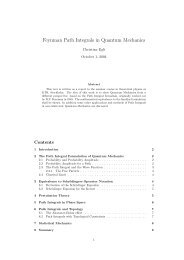
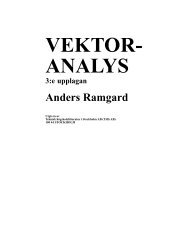
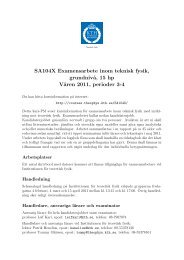

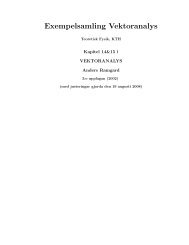

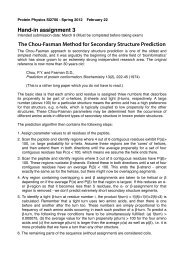

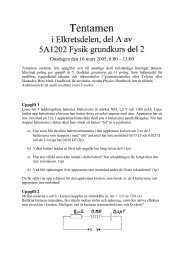
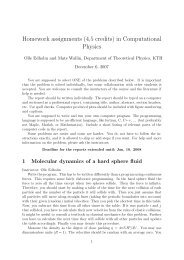
![[VAR]=Notes on variational calculus](https://img.yumpu.com/35639168/1/190x245/varnotes-on-variational-calculus.jpg?quality=85)